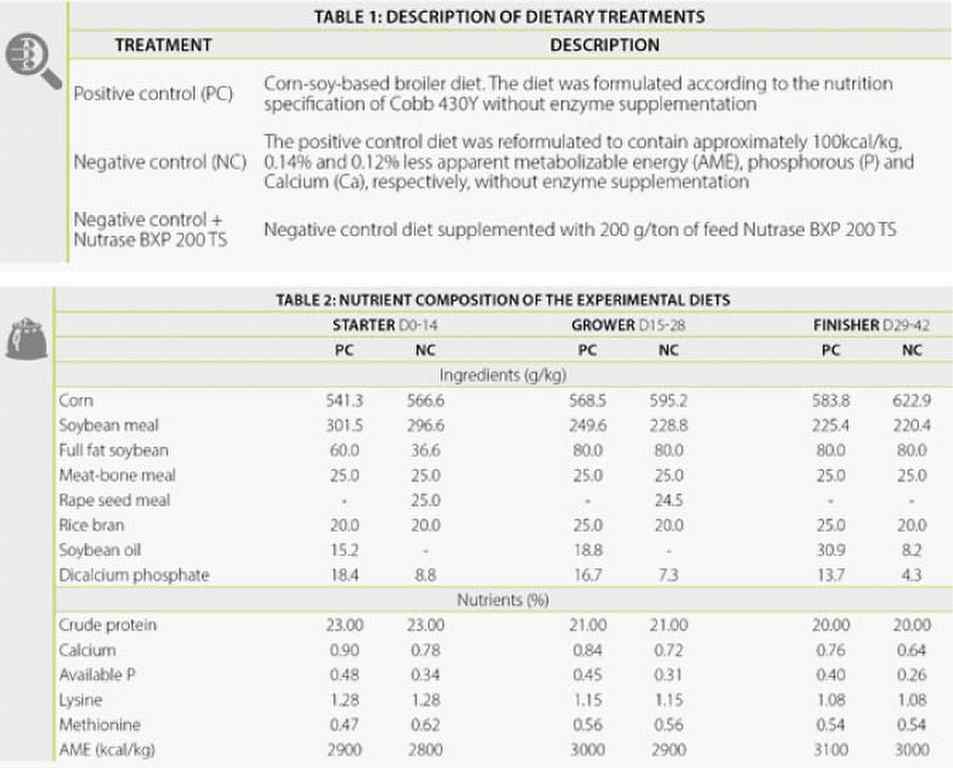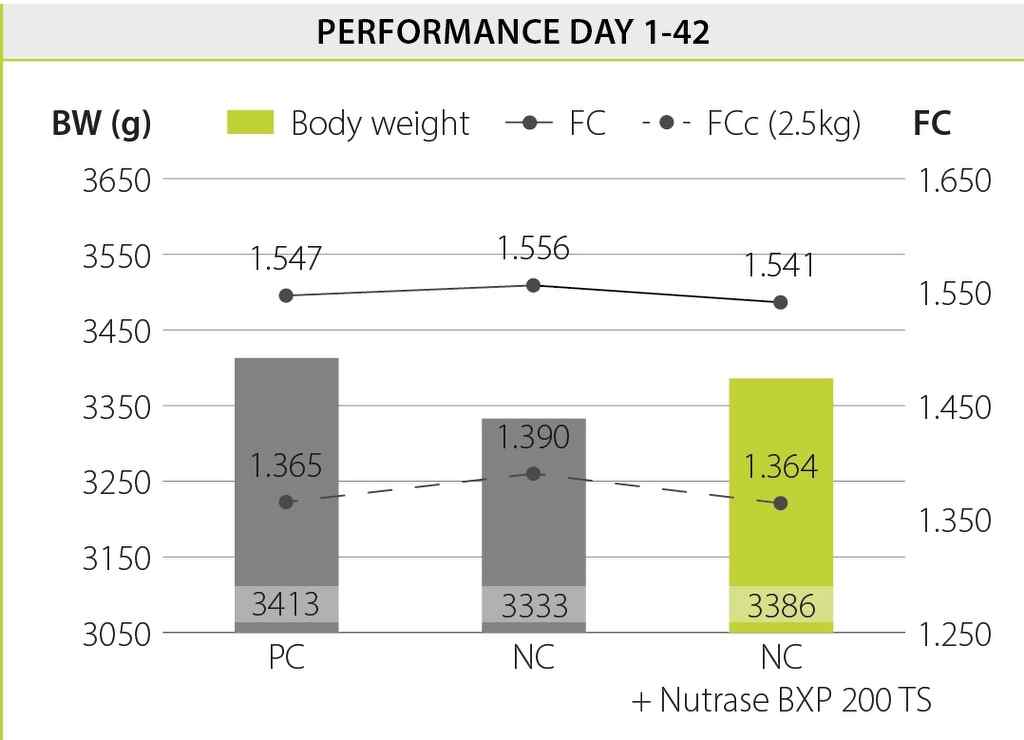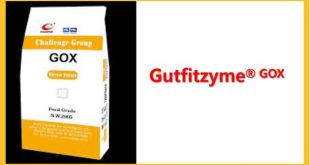Nutrase BXP 200 TS is a blend of enzymes, containing endo-xylanase, β-glucanase, α-amylase and 6-phytase activities. This multi-enzyme complex is developed for production animals to guarantee an optimal digestibility of feed and supply of nutrients to the intestinal microbiota to improve gut health.
Endo-xylanase and β-glucanase. Arabinoxylans (AX) and β-glucans are important anti-nutritional factors in raw feed ingredients. Their most well know anti-nutritional effect is the increase of viscosity in the intestinal content, making digestion and absorption of nutrients extremely difficult. Also, unfavorable hindgut fermentation is stimulated. The presence of endo-xylanase and β-glucanase in Nutrase BXP 200 TS reduces these anti-nutritional effects of feed ingredients.
α-amylase. Starch is the main energy source in cereals for production animals. During starch digestion, α-amylase and gluco-amylase are produced by the animal and secreted into the small intestines. However, in young animals and during transition periods the endogenous production might be insufficient. In this case, the presence of α-amylase in Nutrase BXP 200 TS will support the animal to digest starch.
6-phytase. Phosphorous (P) is a key element in all known forms of life. In cereal grains, P is mainly stored in the form of phytic acid or phytate. Monogastric animals are unable to utilize P from phytic acid or phytate, as they lack endogenous phytase. Nutrase BXP 200 TS contains a bacterial 6-phytase that releases phosphate from phytic acid or phytate and increases the availability of a whole range of nutrients (e.g. P, Ca, Zn, Fe, Cu).
The aim of this trial is to investigate the effect of Nutrase BXP 200 TS to a corn-based diet with reduced energy, P and Ca matrix values on broiler performance.
MATERIALS AND METHODS
A pen trial was conducted in which Cobb 430Y male broilers were reared in a poultry house (AgriVet, India) for 42 days. A three phase dietary program (starter d0-14, grower d15-28 and finisher d29-42) was used in which all diets were fed ad libitum. A total of 180 broilers were randomly allocated to 3 treatments (Table 1) with 6 replicates per treatment (11 birds/pen at the start of trial). The composition of the dietary diets is listed in Table 2. Body weight and feed intake were recorded at weekly intervals. Feed conversion was calculated from the measured weight gain and feed intake. Pen mortality was recorded to correct feed intake. 
RESULTS
At the end of the trial period (day 42), the birds fed the negative control diet presented the worst results for body weight and feed conversion. The nutrient and energy reductions of the negative control diet effectively reduce broiler growth performance. The supplementation of Nutrase BXP 200 TS resulted in a higher body weight (+ 53g) and improved feed conversion (by 2.6 points) compared with the negative control group. Moreover, the feed conversion of the Nutrase BXP 200 TS group equaled the FC in birds fed the positive control diet. 
CONCLUSIONS
The supplementation of Nutrase BXP 200 TS improved the performance of broilers fed diets with reduced nutrient and energy levels. Based on these trial results, Nutrase BXP 200 TS can be supplemented to a corn-based diet with matrix values of 100 kcal AME, 0.14% P and 0.12% Ca without any probable detrimental effect on broiler performance.
Authors : Jesse Stoops, Dr. Amit Patra and Geert Van de Mierop
 Agrinews24 কৃষির সাথে, কৃষকের পাশে
Agrinews24 কৃষির সাথে, কৃষকের পাশে






















